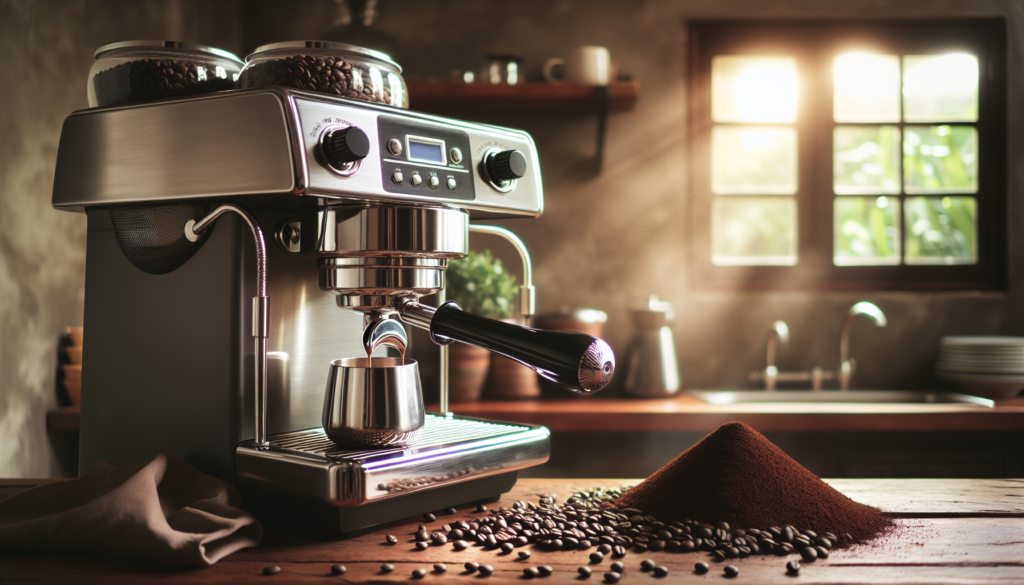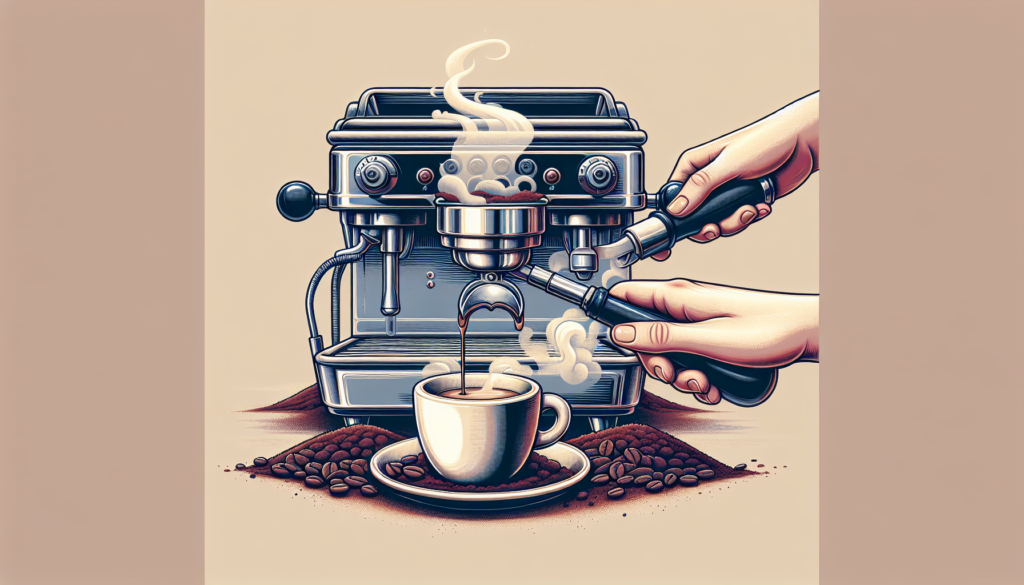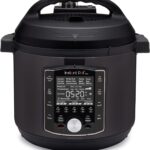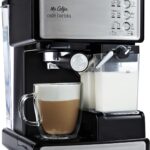So you’re wondering if you can use coffee grounds for espresso? It’s a common question among coffee enthusiasts who want to experiment with different brewing methods. In this article, we’ll explore whether using coffee grounds for espresso is a viable option, the potential impact on taste, and any tips for achieving the perfect espresso shot. Whether you’re a coffee connoisseur or just curious about the world of espresso, keep reading to find out if your coffee grounds can become your new go-to for that rich and aromatic cup of espresso.
What is Espresso?
Definition of Espresso
Espresso is a highly concentrated form of coffee that is made by forcing hot water through finely ground coffee beans. It is known for its strong flavor and rich, velvety texture. Unlike regular brewed coffee, which is typically made by dripping water over coarser coffee grounds, espresso requires a different brewing process that extracts intense flavors from the beans in a shorter amount of time.
The Brewing Process
The brewing process for espresso involves several key steps. First, the coffee beans are ground to a fine consistency, similar to powdered sugar. This fine grind allows for a greater surface area contact with the water, ensuring maximum extraction of the coffee’s flavors. The coffee grounds are then tamped down firmly into a portafilter, which is a small metal filter basket. The portafilter is then attached to an espresso machine. Hot water, heated to around 200°F (93°C), is forced through the compacted coffee grounds at high pressure, typically between 9 and 15 bars, for a duration of about 25 to 30 seconds. This process yields a small but potent shot of espresso, which can be enjoyed on its own or used as a base for other popular coffee beverages such as lattes and cappuccinos.
Different Types of Coffee Grounds
Arabica vs. Robusta
When it comes to choosing the right coffee grounds for espresso, two common types are Arabica and Robusta. Arabica beans are generally considered to be of higher quality and are known for their delicate flavors and distinct aromas. They have a lower caffeine content compared to Robusta beans and typically produce a smoother and less bitter espresso. On the other hand, Robusta beans are known for their higher caffeine content and stronger, more robust flavor profile. They often contribute to the characteristic “bite” or bitterness associated with some espressos. Ultimately, the choice between Arabica and Robusta coffee grounds for espresso comes down to personal preference.
Dark Roast vs. Light Roast
Another consideration when selecting coffee grounds for espresso is the roast level. Dark roast coffee beans are roasted for a longer period, resulting in a rich, intense flavor and a slightly oily appearance. Light roast coffee beans, on the other hand, are roasted for a shorter time, preserving more of their natural acidity and floral notes. Dark roast espresso tends to have a bolder and more robust flavor, with caramel and chocolate undertones, while light roast espresso can be more vibrant and fruit-forward. Again, the choice between dark and light roast coffee grounds depends on individual taste preferences.
Ground Size
The size of the coffee grounds also plays a crucial role in the extraction process and ultimately affects the flavor of the espresso. For espresso brewing, a fine grind size is necessary to slow down the water flow and ensure proper extraction. If the grind is too coarse, the water will flow too quickly, resulting in under-extracted and weak espresso. Conversely, if the grind is too fine, the water may not flow through the coffee grounds at all, leading to over-extraction and a bitter taste. It is important to find the right balance and adjust the grind size accordingly to achieve the desired flavor profile.

Using Coffee Grounds for Espresso
Can You Use Regular Coffee Grounds for Espresso?
While it is technically possible to use regular coffee grounds for espresso, it is not recommended. Regular coffee grounds, which are typically coarser than espresso grounds, are designed for drip brewing methods that involve a longer extraction time. When used for espresso, the water will flow through the coarser grounds too quickly, resulting in a weak and diluted espresso shot. Additionally, regular coffee grounds may not be finely ground enough to extract the desired flavors and aromas, leading to a subpar espresso experience. It is best to use coffee grounds specifically labeled for espresso to ensure optimal results.
Pros and Cons of Using Coffee Grounds for Espresso
Using coffee grounds specifically designed for espresso offers several advantages. These grounds are finely calibrated for the extraction process, ensuring a consistent and flavorful cup of espresso. They are also typically fresher, as they are often sold in smaller quantities and used more quickly. However, one potential drawback of using coffee grounds for espresso is the cost. Espresso-specific grounds can be more expensive than regular coffee grounds due to their higher quality and specialized manufacturing processes. It is important to weigh these factors when deciding whether to invest in espresso-specific coffee grounds.
Tips for Using Coffee Grounds for Espresso
Grinding the Coffee Beans
To achieve the best results with coffee grounds for espresso, it is important to grind the beans just before brewing. This helps to maximize the coffee’s freshness and flavor. Invest in a high-quality burr grinder, which allows for precise control over the grind size. Aim for a grind size that is fine but not too powdery, with a texture similar to granulated sugar. Experiment with different grind settings to find the sweet spot that yields a balanced and flavorful espresso shot.
Tamping the Grounds
Tamping is the process of firmly pressing down the coffee grounds in the portafilter before brewing. This step ensures an even distribution of grounds and creates a proper seal, allowing for an optimal extraction. Use a tamper with a flat, level surface to apply consistent pressure. The ideal tamp pressure is around 30 pounds (14 kilograms) evenly distributed across the coffee bed. Avoid uneven tamping, as it can result in uneven extraction and flavor inconsistencies.
Brewing Time and Temperature
Brewing time and temperature are critical factors in espresso preparation. Aim for a brew time of around 25 to 30 seconds for a standard shot of espresso. If the espresso shot is extracted too quickly, it may taste weak and underwhelming. Conversely, if the extraction time is too long, the coffee may become over-extracted and bitter. As for temperature, the water used should be heated to around 200°F (93°C). This temperature range helps to extract the desired flavors without scorching the coffee. Ensure that your espresso machine is calibrated to maintain consistency in time and temperature for each shot.

Alternative Methods
Using Espresso Pods
Espresso pods are a convenient alternative to using coffee grounds for espresso. These pre-packaged pods contain pre-measured amounts of finely ground coffee, sealed in a compact disc shape. They are designed to fit directly into compatible espresso machines, eliminating the need for grinding and measuring. Espresso pods offer consistency and ease of use, making them a popular choice for home espresso enthusiasts. However, they can be more expensive than traditional coffee grounds and limit the variety of coffee beans available for brewing.
Using Instant Espresso Powder
Instant espresso powder is another option for those seeking a quick and easy espresso experience. Made from concentrated brewed espresso that has been freeze-dried and ground, instant espresso powder dissolves instantly in hot water. While it may not deliver the same depth of flavor as freshly brewed espresso, instant espresso powder can be a convenient solution for those on the go or without access to an espresso machine. Experiment with the amount of powder to water ratio to achieve the desired strength and flavor profile.
Factors Affecting Espresso Quality
Coffee Bean Quality
The quality of the coffee beans used for espresso has a significant impact on the final result. Choose freshly roasted beans from reputable sources to ensure the best flavor and aroma. Look for beans that have been ethically sourced and properly stored to preserve their quality. Single-origin beans, which come from a specific region or farm, can offer unique flavor profiles that add depth and complexity to the espresso.
Grind Consistency
Consistency in grind size is crucial for extracting a balanced espresso. Invest in a burr grinder that allows for precise adjustments and ensures a consistent grind size. Inconsistent grind sizes can lead to uneven extraction, resulting in a combination of over and under-extracted flavors. Experiment with different grind settings and regularly clean and maintain your grinder to achieve consistent results.
Water Quality and Temperature
Water quality plays a significant role in the taste of espresso. Use filtered water to remove impurities that can affect the flavor. Additionally, the water temperature during brewing is important to extract the desired flavors from the coffee. Aim for a range of 195°F to 205°F (90°C to 96°C). Avoid using water that is too hot, as it can scorch the coffee and result in a bitter taste.
Machine Pressure and Settings
The pressure and settings of the espresso machine also contribute to the overall espresso quality. Properly calibrate and maintain the machine according to the manufacturer’s instructions. The optimal pressure for espresso extraction is typically between 9 and 15 bars. Experiment with different settings, such as pre-infusion time and temperature, to fine-tune the flavors and consistency of your espresso shots.
Expert Opinions on Using Coffee Grounds for Espresso
Barista Perspectives
Baristas, who are experts in the art of coffee brewing, emphasize the importance of using coffee grounds specifically designed for espresso. They highlight the need for a fine grind size, even tamping, and precise control over brew time and temperature. Many baristas also advocate for using high-quality, freshly roasted beans to achieve the best flavors and aromas. Their expertise and attention to detail can help guide aspiring espresso enthusiasts in their quest for the perfect shot.
Coffee Machine Manufacturers’ Recommendations
Espresso machine manufacturers often provide guidelines and recommendations for using coffee grounds to achieve the best results with their specific machines. These recommendations typically include instructions for grind size, tamping pressure, brew time, and water temperature. It is advisable to consult the manufacturer’s manual and follow their guidelines to ensure optimal espresso extraction and maintain the longevity of the machine.
Conclusion
In conclusion, espresso is a unique and highly concentrated form of coffee that requires specific coffee grounds and a well-executed brewing process to achieve optimal results. While regular coffee grounds are not suitable for espresso, coffee grounds specifically labeled for espresso offer the best chance of a flavorful and satisfying espresso shot. Paying attention to factors such as grind size, tamping pressure, brewing time and temperature, and water quality can greatly enhance the espresso experience. Additionally, alternative methods such as espresso pods and instant espresso powder provide convenient options for enjoying espresso at home or on the go. Consulting with experts in the coffee industry, such as baristas and espresso machine manufacturers, can offer valuable insights and guidance. With the right combination of quality ingredients, proper techniques, and attention to detail, you can elevate your espresso experience and savor the bold and intricate flavors that espresso has to offer.






